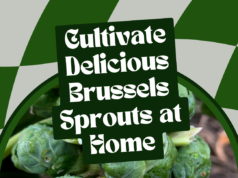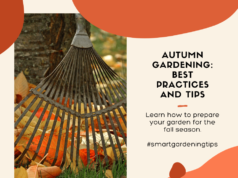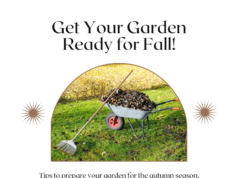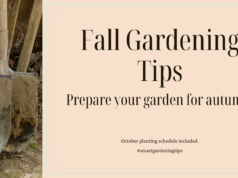As summer comes to an end, it’s time to start thinking about planning your fall garden. Fall planting in the garden can yield bountiful harvests of cool-weather vegetables such as kale, spinach, and broccoli. In this comprehensive guide, we will provide you with all the information you need to know for a successful fall planting season.
Whether you’re a seasoned gardener or a beginner, our fall planting guide will offer helpful tips on preparing your garden for fall planting and choosing the right plants for the season. You’ll learn about the benefits of fall planting, how to care for your fall garden, and ways to extend the growing season. So, let’s get started on creating your perfect fall vegetable garden!
Key Takeaways
- Fall planting can yield bountiful harvests of cool-weather vegetables.
- Preparing your garden for fall planting is essential for success.
- Choosing the right plants for fall planting is crucial.
- Following tips for successful fall planting can help you maximize your garden’s potential.
- Harvesting and enjoying fall vegetables is a satisfying experience.
Why Fall Planting Is Beneficial for Your Garden
Fall planting in the garden offers numerous benefits that can help you achieve a bountiful and fruitful harvest. Here are some reasons why fall planting is a popular choice among gardeners:
- Cooler temperatures: Fall weather provides cooler temperatures that are favorable for growing vegetables that are sensitive to heat. Cooler temperatures allow the plants to grow and develop without being stressed or damaged by the heat of the summer months.
- Less pests and diseases: Insects and pests are less active in the fall, which means your vegetables are less likely to be affected by these issues. Additionally, many diseases that affect plants thrive in the hot and humid conditions of summer, making fall the ideal time to plant.
- Extended harvest: Fall planting can extend your harvest and keep your garden producing well into the cooler months. Many cool-weather crops, such as kale, lettuce and broccoli, can continue to grow and produce even after the first frost.
- Less maintenance: Fall planting requires less maintenance as there is less need for watering and weeding during the cooler months. This allows you to spend less time maintaining your garden and more time enjoying the fruits of your labor.
Preparing your garden for fall planting ensures that you will experience these benefits when you plant your fall vegetables. Let’s explore the necessary steps you need to take to get your garden ready for fall planting in the next section.
Essential Steps for Preparing Your Garden for Fall Planting
Before you begin fall planting, it’s essential to prepare your garden. Below are the key steps you need to take to get your garden ready for planting.
Clean Up Your Garden
Start by cleaning up your garden. Remove any dead plants or debris from your summer garden. This will help prevent pests and diseases from spreading and ensure that your garden is ready for fall planting.
Soil Preparation
Once your garden is clean, it’s time to prepare the soil. Start by testing the soil to determine its pH level and nutrient content. You can get a home testing kit or send a soil sample to a local testing lab.
Based on the results, you may need to adjust the pH level or add nutrients to the soil. You can add organic matter such as compost or well-rotted manure to improve soil structure and fertility.
Mulching
Mulching is an essential step in preparing your garden for fall planting. It helps to retain moisture in the soil, suppress weeds, and regulate soil temperature.
You can use a variety of materials such as wood chips, straw, or leaves for mulching your garden. Apply a layer of mulch about 2-3 inches thick around your plants.
Plan Your Garden Layout
When planning your garden layout, consider factors such as plant height, spacing, and sunlight requirements. You can use a garden planner tool or graph paper to create a layout for your fall garden.
Get Your Tools Ready
Before planting, make sure you have all the necessary tools such as a rake, hoe, shovel, and gloves. Clean and sharpen your tools to ensure they are in good working condition.
Fall Planting Checklist
Here is a fall planting checklist to make sure you are prepared for planting:
- Remove dead plants and debris from your summer garden
- Test your soil and add nutrients if needed
- Mulch around your plants to retain moisture and suppress weeds
- Plan your garden layout
- Clean and sharpen your garden tools
By following these essential steps, you’ll be well on your way to preparing your garden for a successful fall planting season. Happy gardening!
Choosing the Right Plants for Fall Planting
A colorful array of vegetables suited for fall planting, each with distinct textures and shapes. Highlight the vibrancy of the season by incorporating warm hues, such as golden yellows and burnt oranges, contrasted against cool tones like deep greens and purples. Show each plant standing tall and strong, with their leaves reaching towards the sky and roots firmly planted in the soil. Consider using a variety of angles and perspectives to showcase the diverse range of plants, while ensuring an overall cohesive composition.
When it comes to fall planting, choosing the right plants is crucial. Not all plants thrive in the cooler weather conditions, so it’s important to select the ones that are suited for the season. Here are some of the best plants for fall planting:
| Plant | When to Plant | Harvest Time |
|---|---|---|
| Leafy Greens (lettuce, spinach, kale) | Mid-to Late Summer | Early-to Mid-Fall |
| Root Vegetables (carrots, beets, turnips) | Mid-to Late Summer | Late Fall-to Early Winter |
| Brassicas (broccoli, cauliflower, cabbage) | Mid-to Late Summer | Late Fall-to Early Winter |
These vegetables are not only easy to grow, but they also taste delicious and are packed with nutrients. You can also consider planting garlic, onions, and shallots in the fall, which will grow all winter and be ready for harvest in the spring.
When choosing plants for your fall garden, make sure to check the seed packets or plant labels for information on how long they take to mature. This will help you plan your planting schedule and ensure a successful harvest.
What to Plant in the Fall
Aside from the specific plants mentioned above, there are a few factors to consider when deciding what to plant in the fall. First, consider your climate and the typical weather patterns during the fall season. This will help you determine what types of plants will thrive in your area. Additionally, think about what crops will provide the greatest yield for your efforts.
Some other great options for fall planting include radishes, peas, and Swiss chard. These plants are cold-tolerant and can be planted in late summer or early fall for a fresh harvest before winter.
Fall Planting Checklist
- Clean up any debris from your summer garden
- Prepare the soil by adding compost or other organic matter
- Choose the right plants for fall planting
- Start seeds indoors for a head start on the growing season
- Plant crops at the appropriate time for your location
- Water regularly to ensure healthy growth
- Protect plants from frost with row covers or other methods
Following this checklist will help ensure a successful fall planting season. With the right plants and proper care, you’ll be on your way to a bountiful harvest.
Tips for Successful Fall Planting
Planting in the fall requires some specific considerations. Here are some tips to ensure successful fall planting:
- Choose the right plants: Not all plants thrive in the fall, so it’s important to choose the right ones for your garden. Refer to Section 4: Choosing the Right Plants for Fall Planting for a list of the best plants to grow in the fall.
- Prepare the soil: Before you start planting, make sure your soil is ready for fall. Refer to Section 3: Essential Steps for Preparing Your Garden for Fall Planting for essential soil preparation tips.
- Plant at the right time: Timing is key when it comes to fall planting. Plant your vegetables 6-8 weeks before the first frost to ensure they have enough time to mature.
- Provide adequate spacing: Proper spacing between plants ensures they have enough room to grow. Make sure to follow the spacing guidelines on your seed packets.
- Water properly: Water your plants deeply and consistently to promote healthy growth. Water them in the morning to avoid excess moisture in the evening, which can lead to disease.
- Protect from frost: Cover your plants with blankets, cloths, or frost covers to protect them from frost. Remove the covers during the day to allow for proper air circulation.
By following these tips, you’ll be on your way to a successful fall garden. Remember to refer to Section 2: Why Fall Planting Is Beneficial for Your Garden for more fall gardening tips and tricks, and Section 9: Troubleshooting Common Issues in Fall Planting if you encounter any problems.
Example of Spacing Guidelines
Here’s an example of spacing guidelines for popular fall vegetables:
| Vegetable | Spacing (inches) |
|---|---|
| Lettuce | 6-8 |
| Spinach | 6-8 |
| Broccoli | 18-24 |
| Cauliflower | 18-24 |
TIPS FOR CARING FOR YOUR FALL GARDEN
An abundance of colorful vegetables, including pumpkins, cauliflower, and kale, growing in a bountiful fall garden. The garden is filled with various gardening tools strategically placed among the plants, and there’s a lush green lawn in the background. The sunlight is shining down on the plants, illuminating them with a warm, golden glow.
Congratulations! You’ve successfully planted your fall garden, but the work doesn’t stop there. It’s essential to give your plants the care they need to thrive. With these fall gardening tips and tricks, your garden will be healthy and productive throughout the season.
PROPER WATERING
Watering is critical for your plants’ health, and it’s essential to do it right. Make sure to water your plants regularly, especially during dry spells. Don’t rely on rainwater alone, as it may not provide enough moisture for your plants. When watering, avoid getting the leaves wet, as this can increase the risk of fungal diseases. Instead, aim to water at the base of the plants.
MULCHING
Mulching is an excellent way to keep your plants healthy and reduce the need for watering. A layer of mulch can help to retain moisture in the soil, prevent weeds from growing, and regulate soil temperature. Use a layer of organic materials, such as leaves or straw, to cover the soil around your plants.
PEST CONTROL
Pests can be a significant problem in the fall, with many insects looking for a warm place to spend the winter. Keep an eye out for pests and take appropriate measures to control them. You can use natural pest control methods, like attracting beneficial insects or using companion planting. If necessary, you can also use organic pesticides, but be sure to read the label carefully before applying.
FERTILIZING
Plants need nutrients to grow, so it’s essential to fertilize them regularly. Use a balanced fertilizer that contains nitrogen, phosphorus, and potassium. You can also use organic fertilizers, such as compost or manure, to provide nutrients to your plants. Be careful not to over-fertilize, as this can damage your plants.
PROTECTING FROM FROST
In colder regions, frost can be a significant problem in the fall. If frost is predicted, cover your plants with a layer of frost cloth or a light blanket. This will help to protect them from the cold and prevent frost damage.
FOLLOWING YOUR FALL PLANTING CHECKLIST
Finally, make sure to follow your fall planting checklist. This will ensure that you have covered all the essential steps, from preparing your garden to planting the right vegetables. Stay organized and keep track of what tasks need to be done when.
Harvesting and Enjoying Fall Vegetables
After all your hard work in the garden, it’s time to reap the rewards of your fall planting! Harvesting your vegetables at the right time will ensure the best flavor and texture. Here are some tips for harvesting and enjoying your fall vegetables:
When to Harvest
Knowing when to harvest your vegetables is essential for peak flavor and nutrient content. Here are some guidelines:
| Vegetable | Harvest Time |
|---|---|
| Broccoli | When the central head is fully formed and tight; before the flower buds open |
| Carrots | When the tops are at least 1 inch in diameter; after a light frost improves their sweetness |
| Kale | When the leaves are tender and sweet; before they become tough and bitter |
| Radishes | When they are firm and crisp; before they become pithy |
| Squash | When the skin is hard and cannot be punctured with a fingernail; before the first frost |
Remember that some vegetables will continue to produce even after the first harvest. For example, kale and collard greens can be harvested multiple times. Just be sure to only remove a few leaves at a time so that the plant can continue to grow and produce.
Recipes and Ideas
Now that you’ve harvested your fall vegetables, it’s time to put them to good use! Here are some delicious recipe ideas:
- Roasted root vegetables – mix together carrots, beets, and sweet potatoes, toss with olive oil and seasonings, and roast in the oven until tender and caramelized
- Butternut squash soup – roast butternut squash and puree with chicken or vegetable broth, cream, and spices for a warm and comforting soup
- Collard greens and bacon – sauté collard greens with bacon, onion, and garlic for a flavorful and hearty side dish
If you have extra vegetables that you can’t use right away, consider preserving them for future use. Freezing, canning, and pickling are all great ways to extend the life of your fall harvest.Now that you know how to harvest and enjoy your fall vegetables, it’s time to get cooking! Try out some of these recipes and savor the flavors of the season.
Extending the Fall Growing Season
With the right techniques, you can extend the fall growing season and continue to enjoy fresh produce from your garden well into the cooler months. Here are some fall gardening ideas and how to plant in the fall to keep your garden thriving:
Cold Frames
Cold frames are perfect for extending the growing season into late fall and early winter. A cold frame is basically a mini-greenhouse that protects your plants from the cold while still allowing them to receive sunlight and fresh air. You can build a simple cold frame using materials like straw bales, old windows, and plastic sheeting.
Row Covers
Row covers are another effective way to extend the fall growing season. These covers are made of lightweight, breathable fabric that allows sunlight and water to pass through while shielding your plants from frost. Row covers are easy to install and can be used to protect plants like lettuce, spinach, and kale.
Crop Rotation
Rotating your crops can help extend the fall growing season by ensuring that your soil remains healthy and balanced. By planting different crops in the same plot each season, you can reduce soil-borne diseases and pests, which can prolong the growing season for your fall vegetables. Be sure to choose crops that are compatible with each other and rotate them according to their different root depths and nutrient requirements.
Protecting Your Plants From Frost
Frost can quickly damage or kill your fall vegetables, so it’s important to protect them when frost is in the forecast. Covering your plants with blankets or tarps can provide temporary protection from frost. You can also use water to protect your plants by misting them or creating a microclimate by placing containers of water around your plants.
By using these techniques, you can extend the fall growing season and enjoy fresh produce from your garden well into the cooler months. With a little effort, your garden can continue to thrive long after summer has ended.
Troubleshooting Common Issues in Fall Planting
As you embark on your fall planting journey, it’s important to be aware of common issues that may arise in your garden. Don’t worry, with some troubleshooting tips and tricks, you can overcome these challenges and still enjoy a bountiful harvest. Here are some garden fall planting tips to help you address potential issues:
Pest Infestations
One of the biggest challenges for fall gardeners is dealing with pest infestations. Pests such as aphids, caterpillars, and beetles can wreak havoc on your plants. To prevent an infestation, it’s important to keep your garden clean and tidy. Remove any debris and weeds that may harbor pests. You can also use natural pest repellents such as neem oil or insecticidal soap.
Nutrient Deficiencies
If you notice your plants are yellowing or have stunted growth, it may be a sign of nutrient deficiencies. Soil can become depleted of essential nutrients over time, especially if you’re growing the same crops in the same area year after year. To address this issue, you can add organic compost or fertilizers to your soil to replenish the nutrients.
Overwatering or Underwatering
Proper watering is essential for the health of your plants. Overwatering can lead to root rot and fungal diseases, while underwatering can cause plants to wilt and die. It’s important to strike a balance and water your plants regularly and consistently. You can also consider adding mulch around your plants to help retain moisture and prevent evaporation.
Soil pH Imbalance
Soil pH is a crucial factor in plant growth. If your soil is too acidic or alkaline, it can affect the availability of nutrients to your plants. It’s important to test your soil pH and adjust it accordingly. You can use lime to increase soil pH or sulfur to decrease it.
By being aware of these common issues and taking steps to address them, you can ensure the success of your fall garden. Happy fall planting!
FAQ
What is fall planting?
Fall planting refers to the practice of planting crops or vegetables in the garden during the autumn season. It is a way to extend the growing season and ensure a bountiful harvest.
Why is fall planting beneficial for your garden?
Fall planting offers several advantages for your garden. The cooler weather conditions are ideal for many crops, and it can help to control pests and diseases that are more prevalent in the summer. Fall planting also allows for earlier harvests in the following year.
How do I prepare my garden for fall planting?
To prepare your garden for fall planting, you should start by removing any remaining summer crops and weeds. It is also important to amend the soil with compost or organic matter to ensure it is nutrient-rich. Additionally, you may need to adjust the pH levels and perform any necessary soil tests.
What are the best plants for fall planting?
Some of the best plants for fall planting include cool-weather vegetables such as leafy greens (lettuce, spinach, kale), root vegetables (carrots, radishes, beets), and brassicas (broccoli, cauliflower, cabbage). These plants thrive in the cooler temperatures of the fall season.
What are some tips for successful fall planting?
To ensure successful fall planting, it is important to provide adequate spacing between plants, provide regular watering, and protect them from frost. Mulching can help to retain moisture and regulate soil temperature. It is also essential to monitor and address any pest or disease issues promptly.
How do I care for my fall garden?
Caring for your fall garden involves regular watering, mulching to retain moisture and suppress weeds, and monitoring for pests and diseases. It is also important to harvest crops as they mature and to provide support for taller plants, such as trellises for climbing vegetables.
When and how do I harvest fall vegetables?
Fall vegetables should be harvested when they reach their peak ripeness. This may vary depending on the specific crop. Generally, you can check for signs of maturity, such as color or size, and use a sharp knife or shears to harvest the vegetables. Harvesting in the morning when temperatures are cooler is often recommended.
How can I extend the fall growing season?
You can extend the fall growing season by using techniques such as cold frames, row covers, or hoop houses to protect plants from colder temperatures. These structures provide additional insulation and help to create a microclimate that is more favorable for plant growth.
What are some common issues in fall planting and how can I troubleshoot them?
Common issues in fall planting include pest infestations, nutrient deficiencies, and diseases. To troubleshoot these issues, you can use organic pest control methods, ensure proper nutrient balance through soil testing and fertilization, and promptly address any signs of disease by removing affected plants or applying appropriate treatments.
Conclusion
Congratulations on completing this comprehensive guide on fall planting in the garden! By now, you know everything there is to know about fall planting, from the benefits of planting in the fall to tips and tricks for a successful harvest.
Remember to prepare your garden properly by following the essential steps outlined in this guide. Choose the right plants for fall planting and take care of them to ensure a bountiful harvest.
Utilize the tips and techniques to extend your fall growing season, and troubleshoot any common issues that may arise. Finally, enjoy the fruits of your labor by harvesting and using your homegrown fall produce in delicious recipes.
We hope this fall planting guide has inspired you to try your hand at gardening in the fall. Remember, with the right preparation and care, you can successfully plant a fall vegetable garden and enjoy the abundance of cool-weather veggies.
Happy fall planting!
















